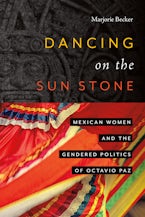- Home
- Diálogos Series
- history
- Cuauhtémoc's Bones
Cuauhtémoc's Bones
Forging National Identity in Modern Mexico
Published by: University of New Mexico Press
352 Pages, 6.00 x 9.00 in, 37 duotones
In 1949, a group of villagers and ad hoc archaeologists dug up what they believed to be the remains of the last Aztec emperor, Cuauhte?moc, in a remote village in the mountains of central Mexico. State and local leaders enthusiastically promoted this remarkable discovery and nationalist celebrations erupted throughout the country. The festivities ended abruptly when professional Mexican archaeologists denied that the body was that of Cuauhte?moc, igniting what became the greatest scandal in the cultural politics of twentieth-century Mexico. Suddenly, Cuauhte?moc's bones were at the center of debates about the politics and mechanisms of Mexican national identity.
In this engaging study, Paul Gillingham uses the revelation of the forgery of Cuauhte?moc's tomb and the responses it evoked as a means of examining the set of ideas, beliefs, and dreams that bind societies to the nation-state.
Paul Gillingham is assistant professor of history at the University of North Carolina, Wilmington.
"Taking as his subject the 1949 discovery of a burial beneath the church altar in a remote village in highland Guerrero, Mexico, reputed to contain the bones of the last Aztec emperor Cuauhtémoc, Paul Gillingham has written an outstanding historical monograph (and whodunit) that unravels the mystery, follows the clues, evaluates the false documents, explains the national fascination with the bones, dismisses the red herring, identifies the perpetrators of the obvious fraud, and places it within efforts to reframe national identity."
"Gillingham's account, based on broad, thorough research with an impressive combination of primary and secondary sources, articulates a well-written narrative with his profound understanding of Mexican history, lore, myth, and culture. Highly recommended."
"a remarkable study that enriches profoundly our understanding of nationalism and unwraps the multiplicity of voices participating in shaping the nation."
"Paul Gillingham has told this story with deep and theoretically informed scholarship, discernment, dry wit, and stylistic panache in a delightful study built around the putative discovery of the Aztec emperor's remains in 1949 in the isolated village of Ixcateopan, in the Mexican state of Guerrero."










